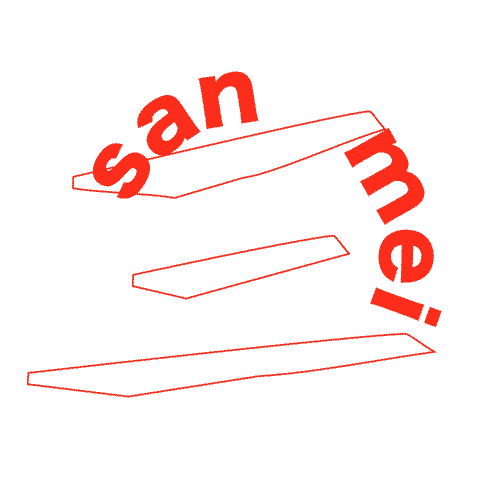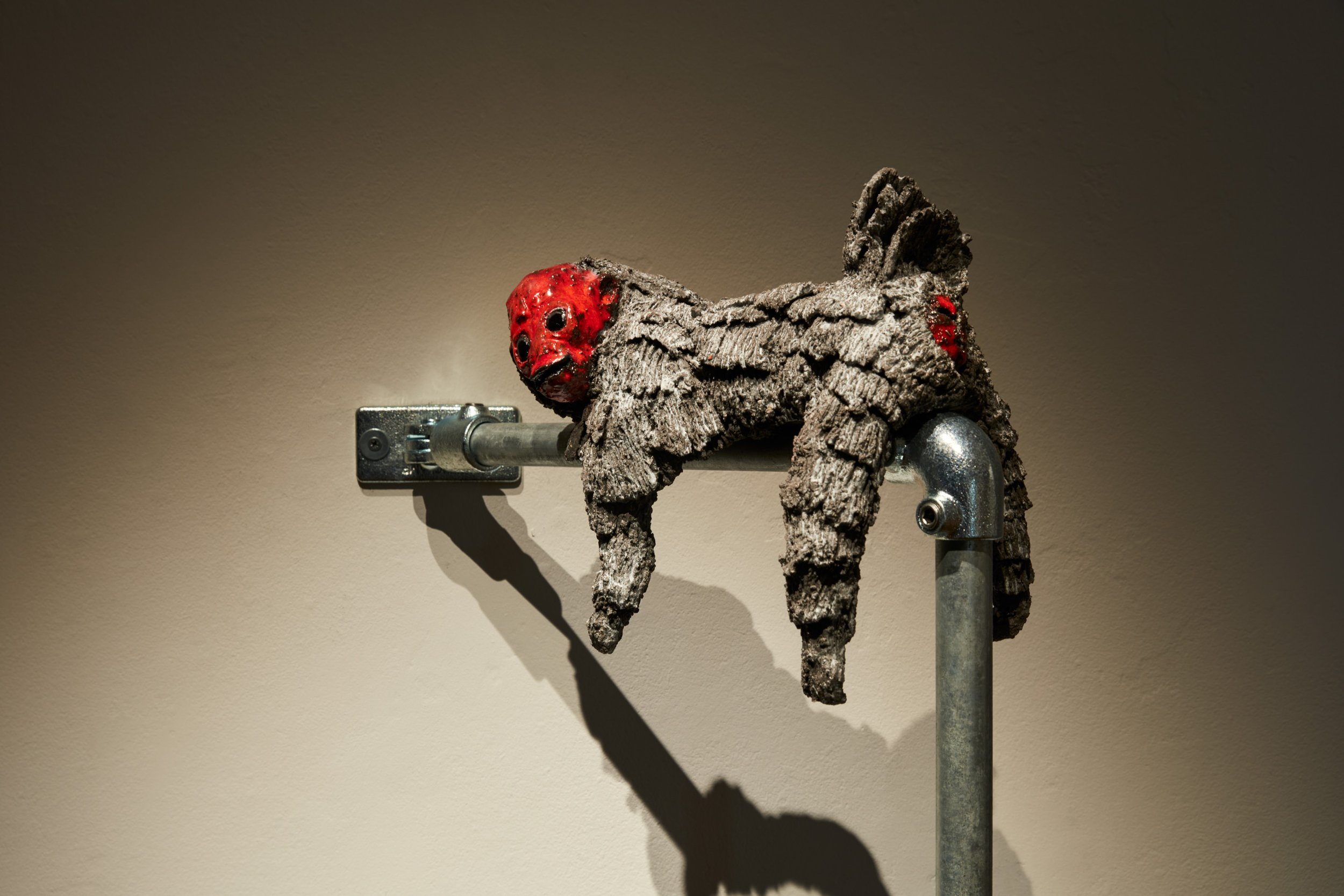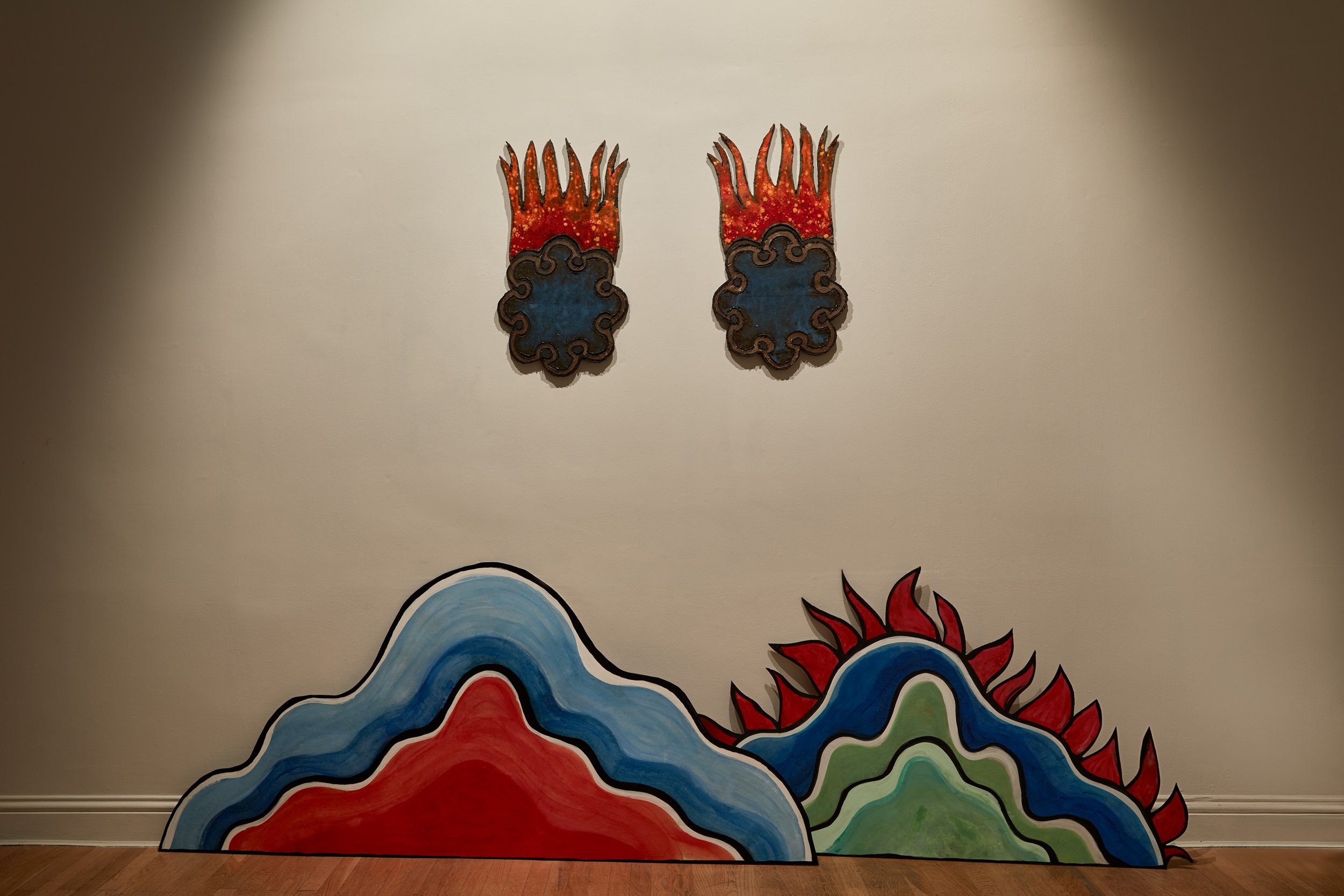Melanie Jackson:
Rouge Flambé
7 July - 12 August 2023
Melanie Jackson, Rouge Flambé, 2023. San Mei Gallery 2023.
San Mei Gallery is pleased to present a solo exhibition by Lambeth- based artist Melanie Jackson. This exhibition will be the first staging of Rouge Flambé, an ongoing body of new work linking fire, flame, animation, kiln, sun, water and earth. At San Mei Gallery, she presents a selection of ceramics, drawings and animation and an opening text co-authored with Esther Leslie, available as a booklet from the gallery front desk.
This new body of work animates connections between protean materials, objects and symbols from the Middle Ages through to the era of colonial conquest and our contemporary world. It takes its name from the red oxide ceramic glaze known by its French moniker rouge flambé, translating to ‘red flame’ in English. Rouge Flambé draws on medieval “fire rocks” found in English and Scottish bestiaries.
In these illustrated compendiums largely describing various animals, fire rocks were placed alongside beasts as animate and even gendered beings believed to be native to the East. These European “fire rocks” that were speculatively to be found in the East were simultaneous with the sun worship and sacrificial red glazes of Ming dynasty copper-red vessels – xiānhóng (鲜红, "fresh red") and bǎoshíhóng (宝石红, "ruby red") – made for Imperial sacrificial ceremonies at the Altar of the Sun, later emulated in Europe as flambé wares in the nineteenth century, and continuing to the present. Jackson looks to these artefacts as lively testimonies of an incendiary history and violent cultural exchange, such as the burning of Yuanmingyuan (the Old Summer Palace in Beijing) by British military fire in 1860. During this act of colonial vandalism thousands of priceless objects and artworks were looted, subsequently to be emulated by potteries across Europe. As such, Rouge Flambé unearths destructive encounters at state level that precipitate not only slowviolence, but also kinships and fusions away from the source of power at street level.
Around these cross-class and transcultural collisions and encounters, Jackson pays attention to the symbolic and affective meanings that circulate around the colour red: warning, danger, anger, rage, shame, joy, luck, and hope. In Europe, medieval clerics likened working people to beasts of the field to endorse feudal dominion over them, and over nature. However, as much as animal bestiaries and animal monstrosities functioned in this process of domination, animals also acted as symbols of resistance, bravery, transformation and magical defiance. Animals move between national stories, playing different narrative functions, and ultimately escape from them. Monkeys, in particular, take form in many wares in China and are mirrored in the flambé ceramics of Europe in the nineteenth century. Jackson’s irreverent ceramic sculptures are based on The Red Uakari Monkey of the Amazon basin, colloquially known since the colonial period as The English(man) because of its bald pate and bright scarlet face.
From sun worship to scorched earth, from the mediaeval bestiary to meme animals, from the red of shame and humiliation to the red of anger and defiance, the spectre of extinction vies with small acts of resistance and the persistence of hope.
Expanding from this first exhibition, Rouge Flambé will culminate in a future film and a long-form publication co-authored by Melanie Jackson and writer Esther Leslie.
Artist biography
Melanie Jackson (UK) works with modes of non-fiction storytelling through assemblages of sculpture, writing and moving image. She draws out the sensorial and political qualities of material, calling on tales of excess and the absurd, and inventive ways of getting by. She works with tactics of representation which remain provisional rather than definitive, treating the gallery as a stage for experimentation with art roles: mimicry, documentary, myth fabrication, science, performance, animation, political commentary, music, installation, craft and the cultivation of aesthetic delight.
Recent exhibitions include Milk, Wellcome Collection (until September 2023), Spekyng Rybawdy at Block 336, (2022), Deeper in the Pyramid at Grand Union, (Birmingham), Primary (Nottingham) and Banner Repeater, (London all 2018) and The Urpflanze Part 2 (2013) and The Urpflanze Part 1 (2010) at the Drawing Room and Flat Time House, (London). She has also made solo exhibitions at Space Exchange (Colchester), Chapter (Cardiff), Matt’s Gallery (London) and Arnolfini (Bristol) and exhibited internationally in group exhibitions including Take Me to the River, DRF Biennale, (Osaka, Japan), The Global Contemporary, ZKM Museum of Contemporary Art, (Karlsruhe, Germany).
Esther Leslie is Professor of Political Aesthetics at Birkbeck, University of London. Her interests lie in the poetics of science and imbrications of politics and technologies. Her books include various studies and translations of Walter Benjamin, as well as “Hollywood Flatlands: Animation, Critical Theory and the Avant Garde” (Verso, 2002); “Synthetic Worlds: Nature, Art and the Chemical Industry” (Reaktion, 2005); “Derelicts: Thought Worms from the Wreckage” (Unkant, 2014), “Liquid Crystals: The Science and Art of a Fluid Form” (Reaktion, 2016) and “Deeper in the Pyramid” (with Melanie Jackson) (Banner Repeater, 2018/ Wellcome 2023).


















